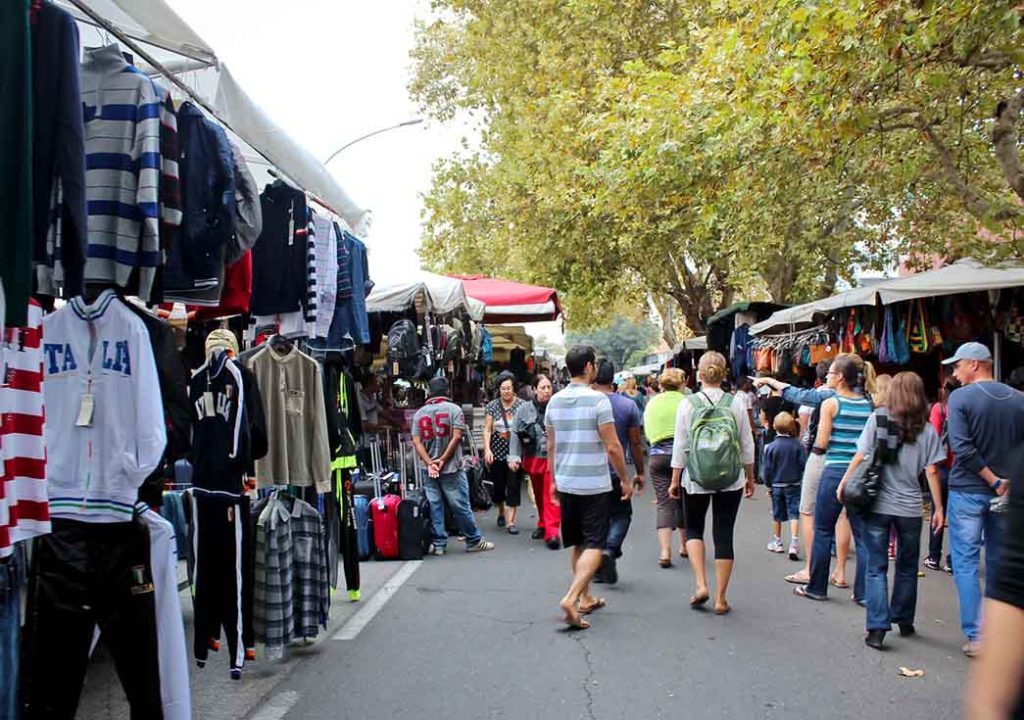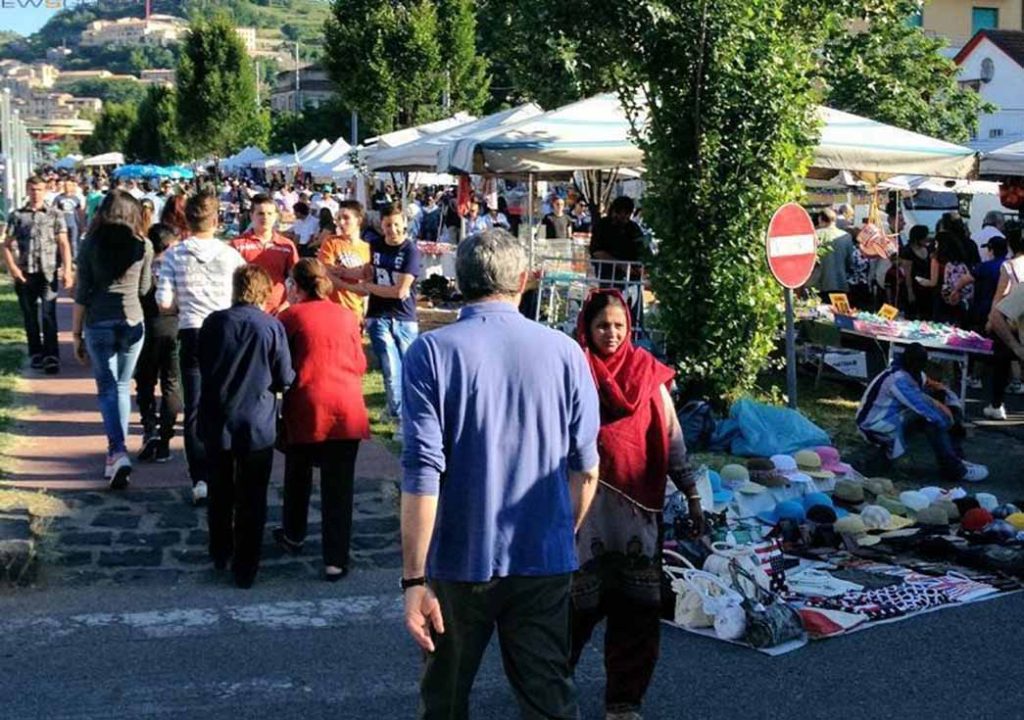Cosenza, nestled in the Calabrian region of southern Italy, is a city that invites travelers to explore its rich history, stunning landscapes, and vibrant culture. But beyond its historic sites and scenic beauty, the markets of Cosenza are where the city’s soul truly comes alive. The local markets offer an authentic taste of Calabria, with their bustling energy, vivid colors, and the unique blend of scents and sounds that characterize daily life in the region.
During my recent visit to Cosenza, I decided to dive deep into the city’s market scene to experience firsthand the local way of life. The markets here are not just places to shop—they are gathering spots for the community, hubs of tradition, and treasures of regional flavors, artisanal crafts, and much more. In this blog post, I’ll take you on a journey through some of Cosenza’s most iconic markets, showing you what it’s like to wander through them, interact with the locals, and immerse yourself in the true spirit of the city.
1. The Piazza Bilotti Market: A Crossroad of Tradition and Modernity
My first stop was the Piazza Bilotti Market, located in one of Cosenza’s most central squares. This market is a perfect blend of the old and the new, where traditional Italian market stalls sit alongside contemporary shops and cafés. The square itself is beautiful, framed by the historic architecture of Cosenza, with the majestic Norman-Swabian Castle looming over the city in the distance.
The market in Piazza Bilotti is known for its diverse selection of goods, ranging from fresh produce to clothing and artisan products. As I walked through the market, the sounds of bargaining and friendly chatter filled the air. I was immediately drawn to the food stalls, where local vendors were selling fresh fruits and vegetables, many of which were grown right in the surrounding hills of Calabria. The variety of citrus fruits, especially the bright oranges and lemons, was unlike anything I had seen elsewhere. Calabrian peppers, fragrant herbs, and ripe tomatoes were piled high, making the colors of the stalls almost as vibrant as the market itself.
One of the things that stood out to me was how engaged the locals were with the vendors. It wasn’t just about making a quick sale—it felt like a genuine exchange between neighbors. I was invited to try a piece of fresh mozzarella by one vendor, who assured me it was made that very morning in a nearby village. The creaminess of the mozzarella, paired with a drizzle of local olive oil, was a simple yet unforgettable taste of Calabrian hospitality.
2. The Mercato di San Giuseppe: The Heartbeat of Cosenza’s Culinary Scene

Next, I ventured to Mercato di San Giuseppe, one of the most beloved and historic markets in Cosenza. Located near the Church of San Giuseppe, this market has been a fixture of the city for generations. Stepping into the market felt like stepping back in time. The narrow aisles were packed with locals, their voices rising above the hum of the market as they haggled for the freshest produce and best deals. There was a certain energy in the air that made it clear this was more than just a shopping experience—it was an event.
The food at Mercato di San Giuseppe is a highlight of any visit to Cosenza. The market is known for its incredible selection of meats, cheeses, and other specialty items. I was immediately drawn to the cheese stalls, where vendors offered samples of Pecorino Calabrese, a robust and tangy cheese that is a staple of the region. One vendor gave me a piece of ’Nduja, a spicy, spreadable sausage that is native to Calabria. The rich, smoky flavor of the ’Nduja paired perfectly with the sharpness of the Pecorino, creating an unforgettable combination that left me wanting more.
In addition to the cheeses and meats, there were also stalls selling freshly made pasta, a local delicacy called lagane—wide, thick strips of pasta that are often served with rich, hearty sauces. I had the opportunity to watch a woman prepare the pasta from scratch right in front of me. She was so skilled at rolling and cutting the dough, it was like watching an artist at work. When I later tasted the lagane, the rustic texture of the pasta paired with a rich tomato and meat sauce made it clear why this dish is such a beloved comfort food in Calabria.
The market also has a strong focus on organic and locally sourced products. Many of the vendors proudly displayed their certifications, offering organic honey, olive oil, and other handmade goods. It was clear that this market was not just about making a profit—it was about supporting local producers and preserving traditional ways of life.
3. La Fiera di Cosenza: A Festival of Local Artisans
For a slightly different experience, I headed to La Fiera di Cosenza, a fair that takes place every year, bringing together artisans, artists, and makers from all over Calabria. It’s a perfect place to discover unique handcrafted items that reflect the rich cultural heritage of the region. Walking through the fair was like stepping into a world of creativity, with everything from intricately designed pottery to handwoven textiles on display.
One of the standout moments at the fair was meeting a local artisan who specialized in creating Ceramiche di Cosenza, hand-painted ceramics that feature traditional Calabrian designs. The vibrant colors and intricate patterns on the pottery caught my eye immediately. The artist explained that each piece tells a story—whether it’s inspired by the region’s rich history or its beautiful natural landscapes. I ended up purchasing a small plate, which now sits on my kitchen counter as a reminder of my time in Cosenza.
Another incredible find at the fair was a stall selling hand-stitched leather goods. The craftsmanship of the leather bags, belts, and wallets was stunning. I spent quite some time talking to the vendor, who explained how he sources his leather from local tanneries and takes great pride in ensuring every piece is made with care and attention to detail. I ended up buying a beautifully crafted wallet that has since become one of my favorite souvenirs from my trip.

4. The Markets as Cultural Hubs
What struck me most about the markets in Cosenza wasn’t just the goods being sold, but the sense of community they foster. Markets here are places where people gather—not just to buy and sell, but to connect with one another. It’s a time for the locals to catch up, share news, and exchange stories. Everywhere I went, I saw people greeting each other with warm smiles and friendly conversations.
At one point, I sat down at a small café near the Mercato di San Giuseppe to rest and people-watch. The café owner brought me a coffee on the house, and we struck up a conversation about life in Cosenza. He told me how important the markets were to the identity of the city. “They are not just places for commerce,” he said, “they are where our traditions live. They are where we come together to celebrate who we are.”
It’s this sense of community that makes the markets in Cosenza so special. They are a reflection of the city’s values—its deep-rooted traditions, its focus on local produce and craftsmanship, and its warm, welcoming spirit. For me, visiting these markets wasn’t just about shopping—it was about connecting with the heart of Cosenza.
5. A Journey into the Flavorful World of Calabria
No trip to Cosenza would be complete without exploring its food markets. The abundance of fresh, local ingredients, the passionate vendors, and the rich culinary traditions of the region make the markets here a must-see for anyone interested in Italian food culture. Whether you’re savoring a slice of fresh mozzarella, sampling a piece of spicy ‘Nduja, or simply enjoying a cup of coffee with a local, the markets of Cosenza offer an unparalleled opportunity to experience the flavors and hospitality of Calabria.
For me, the markets of Cosenza were one of the highlights of my trip. They provided an authentic window into the daily life of the city, offering both a taste of its past and a glimpse into its vibrant future. If you ever find yourself in Cosenza, be sure to take the time to visit these markets. You’ll leave not only with souvenirs, but with memories of a city that truly knows how to live and celebrate its heritage.